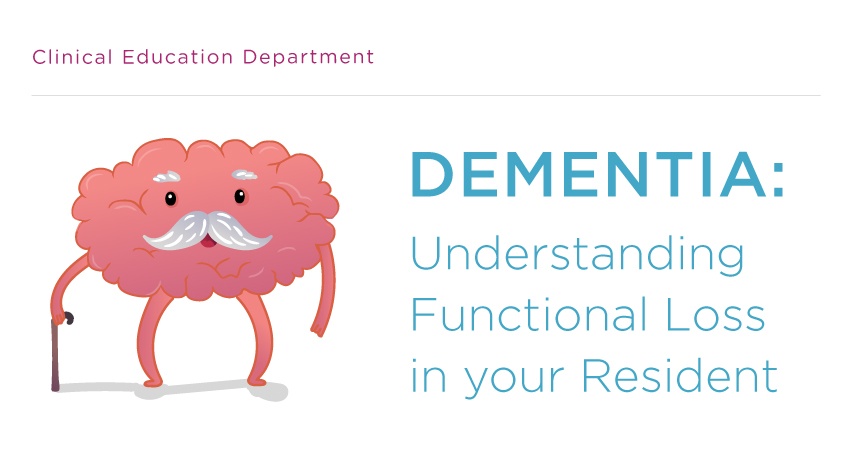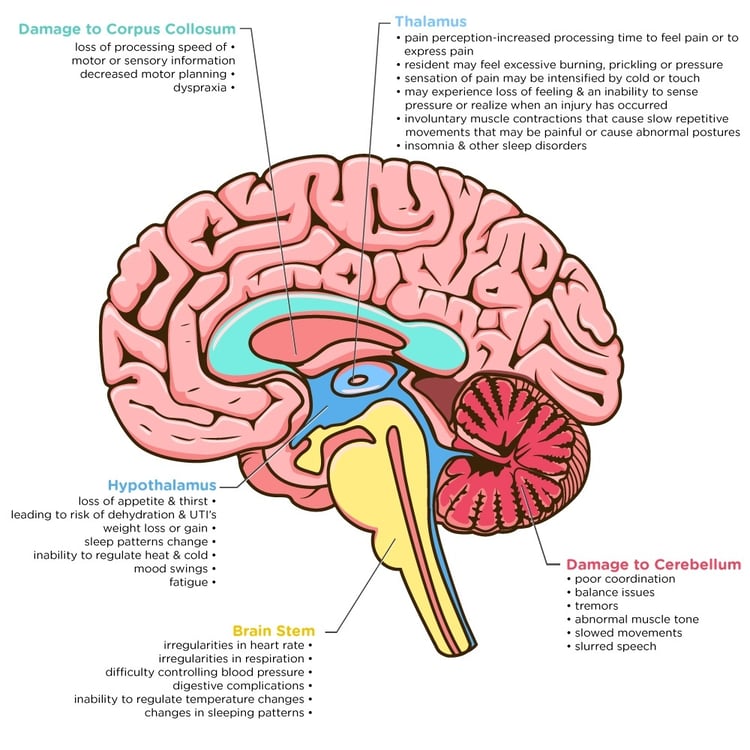Part 3 in our series on Dementia. Check out Part 1 and Part 2.
Approximately 60% of all LTC residents have Alzheimer’s dementia or another form of dementia. Another very interesting statistic is that 70-80% of all LTC residents are wheelchair bound. These two statistics point to a dire need for therapists to understand how dementia causes damage to the brain and, therefore, functional loss and how this translates to seating and positioning challenges.
The images above are great to print out and pin up in your gym as a compassionate reminder of just how much they have lost as a result of this disease. This information can be overwhelming, but categorizing functional losses will help. I group the above loss of function into the following categories:
1. Temperament
- Inappropriate behavior
- Personality changes
- Emotional instability
- Aggressive behavior
- Mood swings
- Anxiety
- Depression
- Anger
- Stress
2. Sensation
- Loss of feeling
- Decreased ability to feel hot/cold
- Inability to feel the effects of pressure
- Inability to regulate heat and cold
- Increased processing time to recognize and express pain
- Feel heightened pain such as burning or prickling or pressure
- Sensation of pain intensified by cold or touch
- Loss of feeling and inability to sense pressure or when injury has occurred
3. Motor
- Loss of processing speed of motor and sensory stimuli
- Decreased motor planning
- Dyspraxia
- Poor coordination
- Decreased balance
- Tremors
- Abnormal muscle tone
- Slowed movements
- Muscle fatigue
- Dystonia
- Involuntary muscle contractions
4. Autonomic System Dysfunction
- Irregularities in heart rate
- Irregularities in respiration
- Difficulty controlling blood pressure
- Digestive issues resulting in a loss of appetite, weight loss, or gain
- Inability to regulate temperature changes
5. Sleep Cycle
- Change of sleeping pattern
- Fatigue
- Insomnia and other sleep disorders
6. Safety
- Poor problem solving
- Poor judgement
- Decreased response to painful stimuli
- Hallucinations
- Illusions
- Paranoia
Use these categories to inform your choices and decisions regarding which wheelchair model, cushion, back support and accessories are needed to:
-
Promote a safe swallow
-
Allow the resident to communicate most effectively
-
Participate in activities of daily living
-
Transfer without risk of fall
-
Sit up in a chair pain free and without risk of changing their skeletal structure
-
Prevent falling from the chair
-
Prevent wound development
Now when you read the type of dementia your resident is diagnosed with, you will be better prepared to:
-
Decide the approach you will take with the resident now that you understand their particular signs and symptoms better
-
Assess the educational needs of the resident, staff, and family in regards to their type of dementia
-
Know the cognitive and physical limitations accompanying dementia relative to the part of the brain impacted
In the subsequent blogs, I will look in depth at each category and shed some light on factors to take into consideration when choosing the appropriate wheelchair system.

Ana Endsjo, MOTR/L, CLT
Clinical Education Manager LTC Division
Ana Endsjo has worked as an occupational therapist since 2001 in a variety of treatment settings. She has mainly worked with the geriatric population, dedicated to the betterment of the treatment of the elderly in LTC centers. Her focus has been on seating and positioning and contracture management of the nursing home resident. With this experience, her hope is to guide other therapists, rehab directors, nurses, and administrators through educational guides, blogs, webinars, and live courses in her role as Clinical Education Manager for the long term care division.



